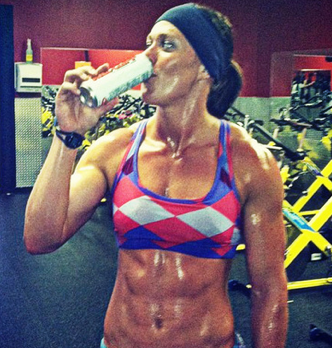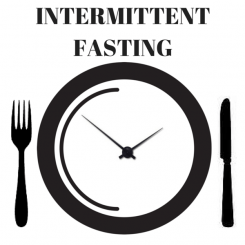Most diets tend to avoid fat like it’s the plague, just right next to sugar on America’s Most Dangerous Criminal Foods list.
So when a high fat, low carb diet appears on the horizon, should people worry that society has finally gone crazy and that the world is officially coming to an end?
Don’t knock it until you’ve tried it. Sure, the whole concept of the keto diet can be difficult to understand at first (no carbs?? are you mad?!), but as you read through our beginner’s guide to keto all the pieces should fall into place.
In fact, it could very well be the best diet you’ve ever tried. When was the last time your diet let you eat delicious foods without any caloric restrictions?
It’s more than just losing weight, though. Keto isn’t a one-trick pony and can actually bring you more health benefits than run-of-the-mill, copycat ones that are just rehashed versions of yesteryear’s health fads.
Ready to give the keto diet a try? Here’s a guide to get you started.
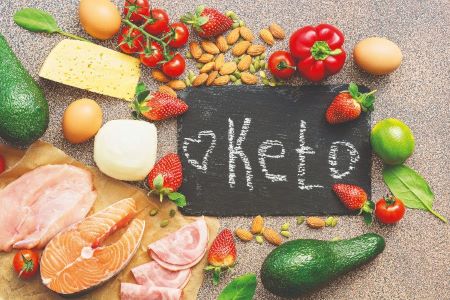
What is the Keto Diet?
The Keto diet is an eating plan that trades out carbohydrates in place of healthy fats.
Before you and your buddies get pitchforks and burn me at the stake, hear me out. There’s a method to this madness, something that’s far more than just counting calories.
You see, the word ‘keto’ isn’t just a catchy phrase, but rather signifies what the diet is trying to do. The ‘no carbs’ rule tricks the body into a state of ketosis, where lots of good things happen inside the body.
With no carbs to consume, your body turns to stored fat as a way to produce energy so you can continue with your everyday life. The liver starts making ketones instead of glucose (from carbs) for fuel.
In the metabolic state called ketosis, your body burns through fat like never before. You also experience a host of health benefits, something that other diets may be unable to do.

Related: The 28-Day Keto Challenge Review
What Are the Benefits of the Keto Diet?
So, what can the keto diet give you aside from letting you eat delicious food?
Let’s start with the most obvious one, a weight-loss method that works!
Lets You Lose Weight
We already know that a low carb, high-fat diet activates ketosis, a state where the body burns fat for fuel, so it makes sense that the keto diet can help you lose weight.
The beauty of it is that you don’t need to deprive yourself of food or calories to hack your body into burning those unwanted stores of fat. As it turns out, flipping the keto switch is more than enough to get your metabolic rate going.
I find it easier to stay on a meal plan than starving yourself and spending your day thinking about how delicious that burger looked. There’s no danger of going on an eating rampage just because you’re not giving your body enough nutrients.
Related: The Best Protein Bars on the Market for the Keto Diet, Low Carb, Vegans and more
Gives You Increased Energy and Focus
You may have shied away from diets after that particularly disastrous episode where you turned into a zombie and lacked the energy to even go to work or function like a normal human being.
Not having enough energy to do the things you want sucks, doesn’t it? But most diet gods proclaim that it’s a necessary sacrifice if you want to fit in those Speedos.
But not the keto diet. It gives you greater energy, one that doesn’t spike and wane like when you’re on carbs. What’s more, ketones are great as brain food, so you’ll get that ‘Limitless’ feeling without having to rely on nootropics.
Helps Manage Diabetes
Without going into specifics, pre-diabetic and diabetic individuals will find the keto to be an invaluable ally.
How does this happen? Let me explain. First, you’ll be on the road to better health when you lose excess pounds, something that keto does really well. We all know that obesity is one of the leading causes of type 2 diabetes and pre-diabetes, so in effect, you’re lowering your risk of developing the disease.
Also, the ketogenic diet helps lower blood sugar levels, which in turn improves insulin sensitivity.
A few studies have found that the keto diet allows diabetic patients to lower their dose or even be free of their diabetes medications.
Increases Physical Endurance
The keto diet feeds you fat instead of carbs, which can lead to better physical endurance.
Essentially, burning fat for energy is much more efficient than burning carbohydrates. It’s been said that while carbs can only sustain you for a few hours during intense training and exercise, stored fats can last for weeks.
This is good news for endurance athletes, weightlifters and those who need to train for long periods of time to remain competitive. The diet’s ability to burn body fat doesn’t hurt, either.
And Other Things
Did you know that the keto diet was originally created by medical experts and dietitians to treat epilepsy and other neurological conditions?
Researchers have long since studied keto and found it to be an excellent program for combating other diseases, including the following:
- Acne
- Parkinson’s
- Alzheimer’s
- Heart Disease
- Cancer
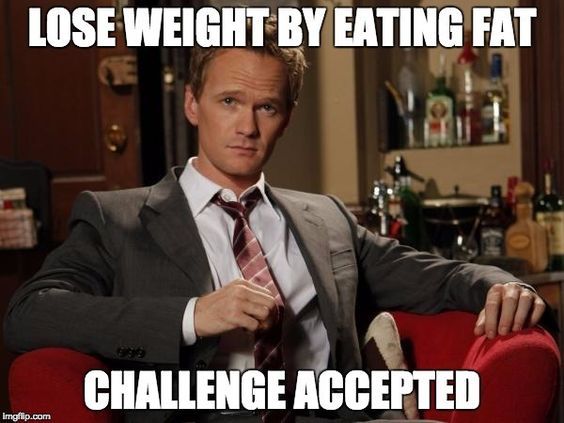
Related: 8 Biggest Reasons you Aren’t Losing Weight on the Keto Diet
What is Ketosis?
I hear you saying, ‘what’s the point of following a low carb, high fat diet anyway?’
It’s fairly simple, really. The keto diet is named as such partly because it forces your body in a state of ketosis (see what they did there?), which is what the eating plan is all about.
In a nutshell, ketosis is what you want your body state to be because that’s when you’ll be getting all the health benefits. During ketosis, fat stores are burned for fuel because there’s not enough of the usual carbs. Then, your liver starts producing ketones that feed the body and mind.
It’s interesting to note that you can achieve a similar state when you’re fasting, which gives roughly the same benefits as the keto diet. But then again, no one in their right mind would want to go on a fast forever, so keto diet is the next best thing.
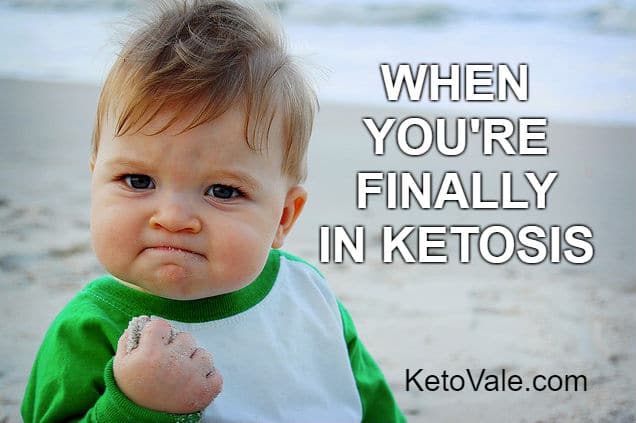
Will I Lose Weight with the Keto Diet?
Ah, the age-old question of, ‘If I do X diet, will I lose weight?’ followed up by ‘Just how much weight can I lose with the keto diet?’
The quick answer to the question is yes, you’ll lose weight with the keto diet, but it’s not a magical fairy godmother or a blue-skinned genie that can take away 50 pounds in a snap.
Just like any other weight loss diet out there, the results can vary from one person to another, depending on their current weight, lifestyle, and several other factors.
For example, let’s say you’ve weighed 300 or so lbs. all your adult life and are used to eating loads of carbs and unhealthy fats. You finally decide to do a 360-degree turn using keto for a positive change.
Now here’s what you can expect. At first, the weight won’t come off easily because your body will be transitioning from carbs, which you consumed as a main food group, to fats, something that you’ve accumulated.
Obesity and weight gain usually come with several health conditions, such as diabetes, high
cholesterol levels, hypertension, and heart disease. In the state of ketosis, your body will start healing itself in remarkable ways. If you have diabetes and are taking medication for it, you’ll find yourself relying less on the drugs as well as noticing that you’re several pounds lighter gradually.
So really, you’re getting a whole load of benefits and not just losing weight when you decide to go on a keto diet.
And even when you’re not burning off as many pounds as you’d like, the fact that you’re now eating healthier should give you peace of mind knowing you’re on the right path.
Dropping body sizes by limiting the number of calories you consume per day is now an outdated model of dieting. The ketogenic diet is the frontline of a new way of thinking, an innovative approach to weight loss that’s different from what we’ve seen so far.
Want to know the secret to burning off those fats faster? Combine the keto diet with regular exercise to double the potential for weight loss. The key to staying with the program is to pick a physical activity that you like so you won’t think it’s torture.
Start with a quick walk around the neighborhood or a jog in the morning. You can set up a simple home gym and download easy exercise programs or watch them on YouTube.
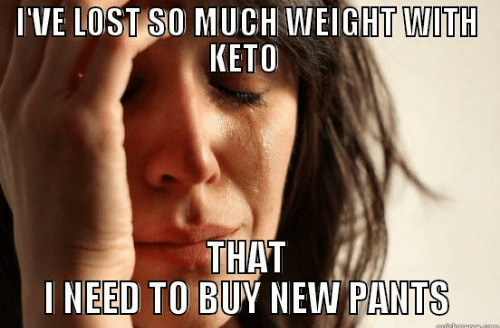
Keto Diet vs Paleo – What’s the Difference?
Most people mistake the keto diet for the paleo diet, and vice versa. After all, don’t they have the same ‘DNA’ of a low-carb plan?
While it’s true that they both share the same basic principle, they also are fundamentally different in more ways than one.
When putting paleo and keto on a side by side, it’s vital that we should clearly define each of them first before focusing on the differences.
Paleo Diet
Ever wanted to act like a caveman and spend all day grunting, doing cave paintings and hunting animals for food?
Sorry, that’s not what paleo is all about. What it is, though is emulating the way our ancestors ate.
Can you imagine how they lived and what kinds of foods were and were not available? Hunter-gatherers didn’t have crops then, so dairy, grains and sugar are out. The same goes for processed foods, salt, legumes and others.
What they had in plenty were proteins in the form of meat, seafood, seeds, honey and nuts, and fruits and vegetables.
In summary, paleo puts whole foods in front and processed foods, sugars and grains in the back seat. Practitioners also try to adopt a lifestyle that focuses on exercise and wellness practices.

Keto Diet
To repeat our definition of the keto diet will be an insult to readers. Instead, we’ll tackle a bit about the low carb, high-fat macronutrient which goes like this:
- Fat should be anywhere between 60 to 80 percent;
- Protein should be anywhere between 20 to 30 percent;
- Carbs should consist of only 5 to 10 percent.
The following should explain the differences and similarities more clearly.
Similarities
Both paleo and keto encourage eating whole foods, i.e., ones that are minimally processed, including fish, meat and fresh veggies, for example.
Grains and legumes are out for different reasons- for keto, grains are unwanted carbs, while paleo believes that they didn’t exist then. Of course, sugars are unwelcome in both diets but healthy fats are embraced with open arms.
And yes, both of them are legit programs when it comes to losing weight. There may be slight variations for doing so, i.e., keto hacks the body to use fat as fuel, while paleo utilizes protein as the main proponent, but the end result is more or less the same.
Differences
Here’s where we get to the meat of the matter.
We’ve established that keto and paleo are quite similar in sharing several food types and the weight loss category.
Here are some notable differences between the two diet types.
Dairy and No Dairy
The image of a caveman milking a cow and churning butter is downright hilarious, and one of the reasons why paleo practitioners avoid it at all costs. So cream, milk, cheese and similar products are gone.
In a ketogenic diet, dairy is allowed and products that have high protein and fat content are welcome. However, adding artificial sweeteners such as sugar is a no-no.
Everything clear so far? Let’s move to the next point.
Meat and Processed Meat
Alright, so paleo practitioners have to assume the mindset that if it didn’t exist in the paleolithic era, it shouldn’t be part of their diet. In this case, processed meats such as ham, salami, bacon and the like are to be excluded.
Going further, paleo focuses in on grass-fed, natural and untouched meat. These foods can then be roasted or cooked in ghee or any other organic fat and oils.
The keto diet allows for preservatives, so ham, salami, and bacon are good. Keep in mind that meals overall should contain no carbs and as little sugar as possible, so read the labels before you prepare them.
Remember, protein makes up roughly about a third of the keto diet, but that doesn’t mean you should consume all its variants. As much as possible, stick to the healthiest ones such as lean meat, chicken and fish.
Carbs and Zero Carbs
Let’s shake things up a little and start with keto. As we already know, carbs are severely limited in keto, and only a small group is really allowed.
You’d be forgiven to think, ‘hey, since vegetables are good I should load up on them, right?’ That’s partially true, but some veggies are not unlike the others in that they may have high starch (and conversely, high carb) content. Having high levels of carbs can interrupt the state of ketosis, after all.
Paleo is a different matter. Practitioners can load up on carrots, beets, sweet potatoes, and other starchy vegetables as long as they’re fresh, organic and in moderation.
Ideology and Macronutrients
Can you guess which diet focuses more on ideology and which one puts an emphasis on macronutrients?
It’s interesting to note that paleo is more than just the food you eat. Aside from the eating plan, practitioners are encouraged to exercise and actively ward off daily stresses by doing meditation or yoga, for example.
As far as the diet is concerned, you’re allowed free rein over fat, protein and carbs as long as they’re unprocessed and whole.
Keto, on the other hand, is more macronutrient than a lifestyle. While I recommend that you should always pair up a diet with exercise, the rules of keto aren’t written in stone. Just keep away from carbs and you should achieve a fat-burning, ketone-rich state in no time.
What are the Negatives of the Keto Diet?
As much as we’d like to believe that the ketogenic diet is all sunshine, rainbows, and unicorns, unfortunately, this is not the case. I’d be lying if I said that keto doesn’t have a negative aspect or that it doesn’t have side effects.
The good thing is that there’s a silver lining, and the negatives are temporary and can be explained.
So, let’s go ahead and do away with them.
The Transition
The switch from burning carbs to fat and ketones is a transition that’s marked with several uncomfortable and sometimes painful bodily changes.
Think going cold turkey, and you’ll have the idea down pat. It could be due to the fact that you’ve been consuming a huge amount of comfort foods all your life, e.g., potatoes, rice and bread, and now that it’s gone your system will have a hard time shifting to stored fat as energy.
The carb-to-fat phase usually lasts anywhere between 2 to 5 days as soon as you begin the keto diet. Here, you may experience muscle fatigue, headaches, tiredness or even palpitations.
Not everyone will have these side effects, though. Moreover, you can minimize the chances of these symptoms from happening by slowly weaning yourself off carbohydrates. The trade-off is that you may not achieve the state of ketosis sooner than expected, but you’ll get there eventually.
Keto Flu
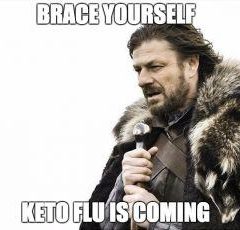
Keto practitioners will experience flu-like symptoms in the first few weeks as their bodies are acclimating to the ‘no carb’ rule.
Some of them include the following:
- Tiredness, fatigue
- Persistent headaches
- Nausea, dizziness
- Irritability
- Poor mental function
- Weakened muscles
- Digestive issues
The culprit for it is, yes, the transition phase. Also, carbs bring with them water retention, and when you lower its intake then the body unloads these excess fluids via urination and sweating.
The result is an immediate loss of several pounds that are mostly water and salt. Before you do a dance of celebration, hear me out- you’re going to be losing essential minerals rapidly, and as such it’s important to make sure you’re getting enough water and salt.
This way, the keto flu’s symptoms won’t be as severe as when you’re not drinking water to replace the lost fluids.
Bad Breath
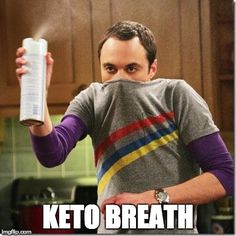
It’s bad enough that you have to deal with flu-like symptoms, but it’s another thing to have what I’d like to call ‘keto breath’.
Along with keto flu, you can also get a characteristic odor that’s somewhat between a mix of nail polish remover and fruits. This is a form of acetone, which is a by-product of your liver producing ketones for energy.
Does this mean that you’ll have to live forever alone, or find someone who can’t smell a dead skunk if it hit them in the face? Thankfully not. It usually goes away on its own, and some won’t even experience it.
There are a few ways on how you can get around this side effect. First, drink enough fluids and salt. Then, practice oral hygiene, e.g., brush your teeth after meals, use a breath freshener or mouthwash, etc. Hopefully, the dragon breath should be gone in about a week or two.
If it doesn’t, don’t give up. What you can do is reduce your state of ketosis so the number of ketones won’t be as pronounced as to spill into your social life. Adjust the carb-fat count and increase carb intake until you achieve the desired breath result.
Granted, the health and weight loss benefits won’t be as much, but at least you don’t have to be a social pariah.
Decrease in Physical Performance
It’s quite normal for those who are starting out to experience both physical and mental performance impairments in the first week or so.
Yes, you’ll be getting the dreaded ‘brain fog’ and muscle weakness, and you’ll probably need to postpone your gym workouts and training until your body gets used to burning fat for fuel during the acclimation phase.
So, the best way to go around this is to take things slow and don’t go for high-intensity exercises if you can avoid it. Give your body time to adapt, and you’ll be surprised at how much more energy, stamina and strength you’ll have once you’re running on ketones.
Can You Drink Alcohol on the Keto Diet?
Since we’re on the topic of having a certain amount of dietary freedom with keto, you may be inclined to ask, ‘Can I drink alcohol with keto?’
Well hurrah for you, because the answer is yes!
Health experts say that alcohol and weight loss don’t mix, and they’re right. When you’re downing a glass of your favorite beverage, it’s not helping your cause.
But staying off alcohol for months isn’t realistic, and it’s better to allow it than have the pangs build up later and culminate in a huge alcoholic binge. The trick is to drink in moderation and choose ones that are keto-approved.

Wine, Beer or Spirit?
Okay, so in keto’s eyes, not all alcoholic drinks are equal.
Some have a higher caloric, and more importantly a higher carb content than others, and this is what we’ll be mostly focusing on.
Wine generally gets the green light in a keto diet. A standard glass of white or red wine and champagne contain only about 2g of carbs. Watch out for sweet dessert wines and sparkling wines, though, as they can make you go over your sugar limit.
Spirits are quite tricky, but shouldn’t pose a problem if you keep them neat. The awesome thing is that pure spirits such as vodka, tequila, whiskey and the like have zero(!) carbs, so that makes them instantly keto-approved.
Mixed spirits are a different can of worms. Soda, juice and sweeteners can make that zero-carb glass into one that will probably eat more than half your daily carb limit. For example, adding tonic to gin will get you 16g of carbs.
Alcopops and wine coolers should be avoided at all costs as they’re a mix of alcohol and sugary substances.
Are you used to kicking back with a brewskie every night? The truth is, beer drinkers and keto are a match made in hell. Beer is notorious for having plenty of carbs such that they’re often called ‘liquid bread’, and abstaining from them should do you a world of good in the long run.
That said, keto-friendly beers are real, but you’ll be restricted to just a few brands and types. Stick to the ‘light’ labels that contain anywhere between 2 to 4g of carbs per serving. If you can’t forego the habit, then make turn it down to just a bottle a week or so.
Best Alcoholic Drinks for Keto
Red or White Wine. Each glass of the good stuff contains only 2g of carbs.
Sparkling Wine or Champagne. Going to a posh party or on a night out with friends? A glass of the bubblies is probably okay, as it only contains 2g net carbs.
Dry Martini. Excluding soda and sweeteners, a dry martini has zero carbs.
Whiskey. On the rocks or not, a shot or two of whiskey should be okay as it doesn’t have carbs.
Before we get to the next topic, here are a few warnings regarding alcohol and the keto diet. You’ll find yourself having a lower tolerance, which is completely normal, but the hangover may have a greater and more pronounced effect.
This means you’re likely to get intoxicated faster than before, so exercise caution and take it slow. Also, the act of drinking alcohol can affect how your liver produces ketones, even if you’re actively choosing brands and types that have little carbs and no sugar.
What Foods Can I Eat on the Keto Diet?
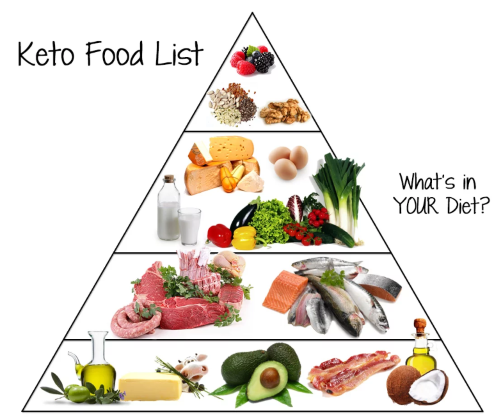
The keto diet has a fairly easy set of eating guidelines anyone can follow.
Low carb, high fat is the name of the keto game, but a lot of people may misinterpret it for something else.
So, to make things easier I’ve come up with a list of the foods you can eat and the ones you should avoid if you’re on the keto diet.
Natural fats, meat, eggs, fish and seafood, cheese and above-ground veggies are recommended, while potatoes, sugary drinks, beer, certain fruits, bread, candy, chocolate and rice are not.
Let’s break it down even further.
High-Fat Dairy
Yes, you’ve read that right- dairy and fats are in and welcome with open arms. Cheese in all its forms can be had, as well as high-fat yogurts, which will definitely make a lot of people happy. Eating butter is now encouraged, and heavy creams can take the place of cooking oil.
Drinks
Water is undoubtedly the number 1 option for keto practitioners. It’s not as boring as it seems- infuse it with lemon or cucumber, or add a dash of salt if you’re experiencing keto flu.
Coffee is good as long as you don’t add too much milk or sugar. For a unique twist, add a pat of butter or a spoonful of coconut oil, and voila! a keto-approved beverage.
Tea is excellent for keto in all its forms as long as you take it without milk or sugar.
While not technically a drink, bone broth is a worthy mention. It’s nutritious, satisfying and most of all, very easy to make. Add a pat of butter to turbocharge your beverage.
Meat
You’ll want to look at unprocessed, organic and grass-fed meats because they’re low in carbs and high in protein. Chicken is an excellent source, as is beef, but there’s no rule saying you can enjoy a few meatballs, sausages and bacon every now and then.
Now, onto seafood. Salmon gets top priority as it’s laden with healthy fats that are good for you. Cook on a skillet with butter, or on an open fire and leave the breading for a truly delicious meal.
Eggs
Eggs are a superfood that you shouldn’t ignore. By all means, incorporate them into your diet!
Simple as they are, you can cook them up in a number of ways. Scrambled, boiled, sunny side up or as an omelet, eggs are solid staples. Pastured or organic ones will be your best bet.
As far as your cholesterol levels are concerned, you shouldn’t eat more than 36 eggs a day. I think it’s safe to assume that we wouldn’t be exceeding 10 to 12, unless you’re gulping down raw eggs for breakfast, lunch and dinner.
Vegetables
Picking out the right vegetables for a keto diet involves a bit of thinking- does it grow above the ground?
Green, leafy ones are your best friends, with broccoli, cabbage, cauliflower, zucchini and avocado being the top ones. They’re particularly good when combined with olive oil for salad, or deep-fried in butter.
Mix and match between veggies and meats so you won’t get tired of the menu.
Sauces
You’ll have plenty of choices on sauces to spice up your food and salad. For cooking, it’s best to get coconut fat, butter and olive oil to leafy greens.
In a keto diet, you have the green light on high-fat condiments such as garlic butter, Bearnaise sauce and the like.
What Foods Do I Avoid on the Keto Diet?
A diet wouldn’t be a diet without some food restrictions, and the keto is no different.
Wondering what kind of foods are banned from your plate? You won’t need a list- here they are in no particular order.
Carbs Carbs Carbs
Yes, carbs will be your enemy number 1, and sugary carbs more so.
Throw all soda, sports drinks, fruit juices and vitamin water out your fridge and into the trash bin. The same goes for cookies, donuts, breakfast cereals, cake, candy bars, frozen treats and sweets. Artificial sweeteners such as aspartame are diseases in disguise.
Repeat after me- ‘say no to starch!’ This will be your rallying call whenever you’re planning meals for the day or week. Wholegrain products should be avoided, as well as all things potato, pasta and bread.
You may not know it, but beans and legumes contain loads of carbs. Unfortunately, beers are out as well as fruits, which surprisingly contain lots of sugar.

Margarine
Margarine deserves special mention because it must be avoided at all costs. Essentially industrial butter with omega 6 fat, it tastes like plastic and has zero health benefits. Why choose margarine when there are better alternatives such as organic butter, olive oil and the like?
How Do I Do the Keto Diet?
Are you raring to go and start your keto diet?
The first step in all of this is to get your body in a state of ketosis.
Take a deep breath, ’cause here we go!
Step 1. Lower Carb Intake
In a typical keto diet, carbs are limited to just 20g per day. Fiber is okay as it can help amplify the effects of ketosis.
Sometimes it’s as easy as consciously lowering carb intake to do the keto diet, but if it doesn’t, then keep reading.
Step 2. Fat = Satiety
The reason why fat is an important part of the keto diet is that it can help you stay full and satiated. When you starve, you tend to go ‘hangry’ and do unreasonable things, like binge-eating on potato chips or chowing down on an extra-large burger, and thus ruining the diet.
Taking in more fat such as olive oil or butter is good because you’ll be burning them off anyway. The key is to stay full so you won’t get sidetracked.
Step 3. Exercise
Get off that couch and move about to increase ketone production.
Strictly speaking, exercise isn’t a requirement but it does help significantly in the cause. You don’t need to take a huge chunk of your time in physical activities, though. Anywhere between 15 to 30 minutes of moderate exercise, e.g., running the treadmill, aerobics or hitting the home gym 2 to 3 times a week should suffice.
Step 4. Quality Sleep
Get at least 7 hours’ worth of sleep each day and keep away from stressful elements. Stress hormones can elevate blood sugar and slow down your efforts to lose weight and achieve ketosis.
Being well-rested gives you a sharper mind and staves off potential diet drawbacks, such as emotional eating and more. Frankly speaking, sleeping is one of the easier things you can do while on the keto diet.

Step 5. Protein Intake
Last but not least, you should keep your protein intake in moderation. About a hundred grams of protein per day should suffice if you weigh 150 pounds, or roughly 1.5 grams per kilo of body weight.
Now, how will you know if you’re in the optimal metabolic state?
Check out these keto signs:
You Have Keto Breath. Your breath may smell like acetone, which is actually a byproduct when the liver begins ketone production. The smell becomes more pronounced the more active you are, e.g., working out, exercise, etc.
You’re Peeing More. You go to the bathroom more often.
You Thirst More and Have Dry Mouth. Fluids will be quickly lost when you’re in a state of ketosis, which can result in symptoms such as ‘cotton mouth’ and a raging thirst.
Conversely, you can get a device that can measure the number of ketones your body is producing. Technology has given us the blood ketone meter, breath ketone analyzer and urine strips so you won’t have to guess whether you’re in the right metabolic state or if you need to keep going.
Sample Keto Menu for Beginners
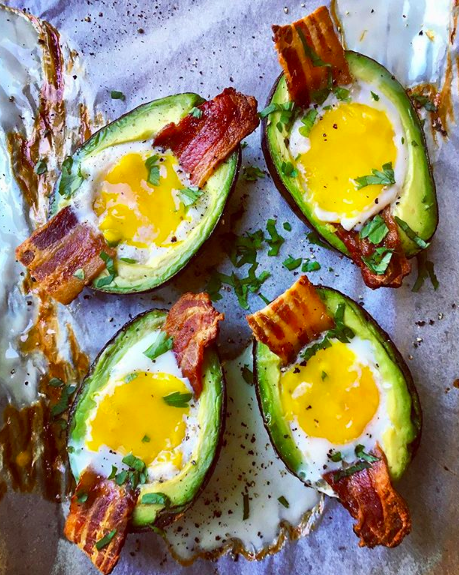
At this point, you may have TMI, or Too Much Information and can’t think about anything else, let alone put together a weekly eating plan.
Your menu is a disaster, and more importantly, you don’t know what the heck you’re doing.
But worry not, because there’s a way to ensure you’re going low on carbs and are on the right track with these easy keto menu for beginners:
Let’s start with the simple- breakfast, lunch and dinner and spread it out to a 2-week program. Keep in mind that my sample menu is mainly a suggestion, so feel free to change as needed as long as you’re following the gist.
Breakfast
Choose from any below:
Scrambled eggs
Keto cheese roll-ups
Frittata and fresh spinach
Milk-free latte
Mushroom omelet
Baked bacon omelet
Keto pancakes with whipped cream and berries
Breakfast sandwich w/o bread
Bulletproof coffee
Keto coconut porridge
Keto egg muffins
Boiled eggs and mayonnaise
Bacon and eggs
Western omelet
Lunch
Choose from any below:
Asparagus wrapped with prosciutto and goat cheese
Salmon-filled avocados
Keto Caesar salad
Cauliflower soup and crumbled pancetta
Artichoke and shrimp
Roast beef and cheddar
Keto tuna salad and boiled eggs
Italian keto plate
Keto quesadillas
Smoked salmon plate
Bacon, avocado and goat cheese
No-noodle chicken soup
Keto Caprese omelet
Asian beef salad
Dinner
Choose from any below:
Pesto chicken casserole
Keto meat pie
Keto Carbonara
Keto pizza
Tortilla with salsa and ground beef
Asian cabbage stir-fry
Pork chops and green beans with garlic butter
Keto hamburger patty with creamy tomato
Fried salmon with cheese and broccoli
Keto chicken casserole
Keto cheeseburger
Fat head pizza
Ribeye steak and oven-roasted veggies
Creamy fish casserole
Got all that? Good. For more keto eating options you should definitely try the 28-Day Keto Challenge by Keto Resource. They have a complete 28-day eating plan and 7 guides to educate and encourage you on the way. It really is a great program, especially for beginners.
Here are some tips on how you can make things easier in terms of food prep, shopping and more.
Write Down Your Shopping List. Make a list so you won’t forget key ingredients later on.
Meal Prep. Meal preparation will be your best friend. For example, you can cook up a large batch of food so you’ll extra servings for the next day.
Time Hacks. You can skip breakfast by having coffee if you’re not hungry or are looking to save money. Sliced cheeses, meats, and vegetables can make for quick, no-fuss cooking and are convenient, too.
What is the Keto Diet’s Effect on Cholesterol?
Keto hits all the right notes for people who are suffering from high cholesterol levels.
Low carb eating programs tend to improve your overall cholesterol markers by increasing HDL, or the ‘good’ cholesterol while lowering triglycerides at the same time.
LDL, or the ‘bad’ cholesterol tends to go down the longer you’re in ketosis. But there are instances where doing the keto diet will have little to no effect on one’s LDL during the first few weeks.
The explanation goes like this – as your body tries to adapt to the switch from carbs to fat, your system may become a bit confused as to how to regulate cholesterol levels. When it acclimates, individuals can look forward to an improved cholesterol profile and a reduced risk for various heart diseases.
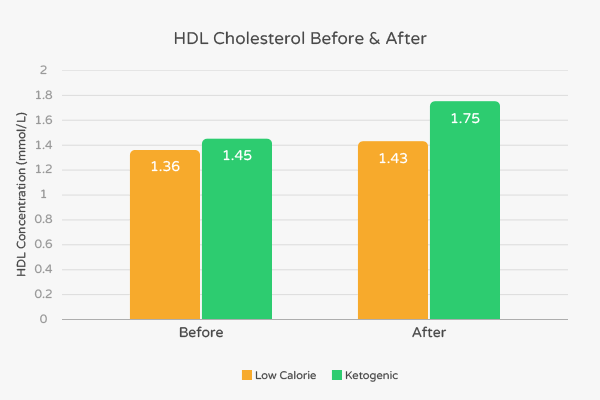
Does the Keto Diet Cause Constipation?
I’m not going to sugarcoat the fact that the keto diet can cause bowel movement problems. For those who are regulars, it can be a bit unsettling, especially during the first few days or weeks.
But the good news is, constipation, IBS, etc. should go away by itself as soon as your system gets used to the new fuel. It’s a side effect that may or may not even affect you at all. Plus, there are a few things you can do to counteract this.
Keto constipation may be the least of your worries because there’s still the dreaded ‘keto breath’, keto flu and low energy phase you’ll have to contend with. All of these are somehow related to the fact that you’re losing salt and water at a higher frequency.
The solution? You’ll want to consciously drink more water every day and supplement it with a nutritious broth or Milk of Magnesia. Fiber is also an excellent addition to eliminating bathroom concerns while on the keto diet.
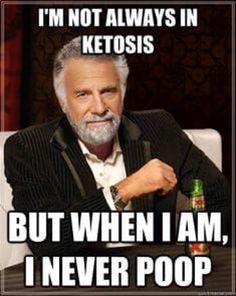
Supplements for the Keto Diet
You may think that the keto diet is such a great eating program that there’s really no need to ‘supplement’.
The choice on supplementing really depends on you, notably your health, current condition, food options and need.
Here are some supplements you definitely want to consider:
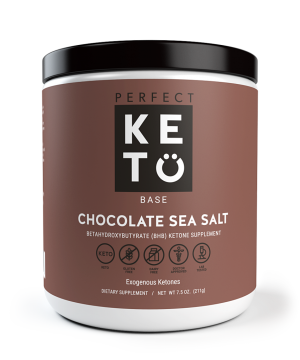 Exogenous Ketones
Exogenous Ketones
Exogenous ketones are ones that come from external sources.
Some claim that supplementing with exogenous ketones helped further their keto agenda and gave them benefits such as decreased appetite, speedy muscle recovery and greater athletic performance.
This would be the best supplement for you to start off with. If you have the money, then go for it. Otherwise, you’ll want to focus on food planning and exercise as a way to get more out of your diet.
Here is our article on the best exogenous ketone supplements, any of those should work pretty well.
MCT Oil
MCT, or medium-chain triglycerides are good for keto as it acts as quick fuel and energy for your brain and body. MCT oil supplements are mainly derived from palm or coconut oil and can give you a nice boost in the fat intake department.
You can give your keto-approved smoothies and shakes a dose of MCT oil to feel fuller for a longer time. If it’s your first time taking them, start with a small dose, e.g., a teaspoon and see how your body reacts to it.
Minerals
Don’t have time to deal with keto flu and dehydration? No problem. You can supplement minerals to get nutrients that offset headaches, thirst and fatigue that are associated with the transition from carb to fat burning.
Magnesium
Magnesium is important, but the thing is that it’s mostly found on foods that are either high in sugar (fruits) or carbs (beans).
Supplementing with magnesium on dosages between 200 to 400mg can ease sleeping problems, muscle cramps and general irritability. Moreover, it’s good for your immune system, energy and blood sugar levels.
Who Should Not Do the Keto Diet?
The keto diet sounds truly wonderful, right? But the fact is, it’s not for everybody.
It’s safe for most people, but there are certain groups of people who should consult their doctors before going on the low carb, high-fat diet.
Mothers who breastfeed, individuals who take high blood pressure medication and diabetic patients are to exercise caution as well. In other words, make sure you get the green light from your GP before making any significant dietary changes.
What Can I Eat at Mexican Restaurant on the Keto Diet?
So, you want to have a fiesta at a Mexican restaurant? It’s cool, you can even enjoy some tequila when on the keto diet.
But what should you eat? No worries, we have you covered.
Some good eating options at a Mexican restaurant include:
- Guacamole – this one is pretty obvious
- Fajitas – Skip the tortilla, just eat it with a fork or ask for lettuce leaves to use instead of the tortillas
- Salads – All restaurants have salads, just be sure to skip and salad with an edible bowl, tortilla strips, corn or other starchy veggies
- Carnitas – This is pulled pork with onions and peppers, skip the tortilla and load up on the sour cream
- Carne Asada – This is marinated steak cooked with onions. Skip the tortilla again and load up on sour cream, guacamole, and pico de gallo
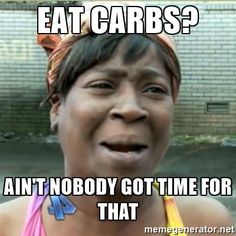
Rules to remember when eating at a Mexican restaurant on the keto diet
- Avoid all the tortillas and shells – these are loaded with carbs, don’t eat them
- Avoid beans and rice – also loaded with carbs
- Avoid corn and potatoes – not keto-friendly
- Also, be sure to avoid any sweet salsa’s or any kind of queso, they are likely loaded with sugar
- No margaritas, they are loaded to the gills with sugar, enjoy the tequila instead!
If you follow those rules you can have most anything else at a Mexican restaurant, just be smart.
How to Properly Come Off a Keto Diet
If you have been on the keto diet for a few months (hopefully successfully) and are looking to get back to eating “normal food” you shouldn’t just wing it.
Winging it can lead to side effects like weight gain, diarrhea, sugar addiction, massive hunger, and blood sugar spikes.
When coming off the keto diet you should start to slowly introduce carbs that are high in protein and fiber. Sprouted bread, crackers with seeds and bean-based pasta are all good selections, you can also mix in some cashews as well.
While you will likely gain a few pounds when you start eating carbs again it shouldn’t be too dramatic and will mostly be water weight. The key is to stick with complex carbs that digest slowly. If you go crazy and eat a bunch of donuts, cake and candy you could see some significant weight gain and other side effects we just discussed.
Transition off the keto diet should take about 2 weeks and you should gradually introduce more carbs each day until you reach your level of normal carbohydrate consumption. This will give your body time to slowly adjust and keep any side effects of coming off the keto diet to a minimum.
Conclusion
Whew, there you have it. The complete guide to the keto diet for beginners!
I hope I’ve covered everything you need to get started. Now go forth, eat fat and reap the health spoils offered by the diet!

Ryan is a former college wrestler and lifelong fitness fanatic with over 25 years in the industry. He’s run half marathons, tackled mud runs, placed in body transformation contests, and coached everything from wrestling to girls’ soccer.
Along the way, he’s tested hundreds of supplements and built a deep well of supplement knowledge. His work has appeared in Muscle & Strength, Testosterone Junkie, The Sport Review, and more. Today, he’s the editor-in-chief of this site, still training hard and helping others reach their goals. Connect with him on LinkedIn below.



